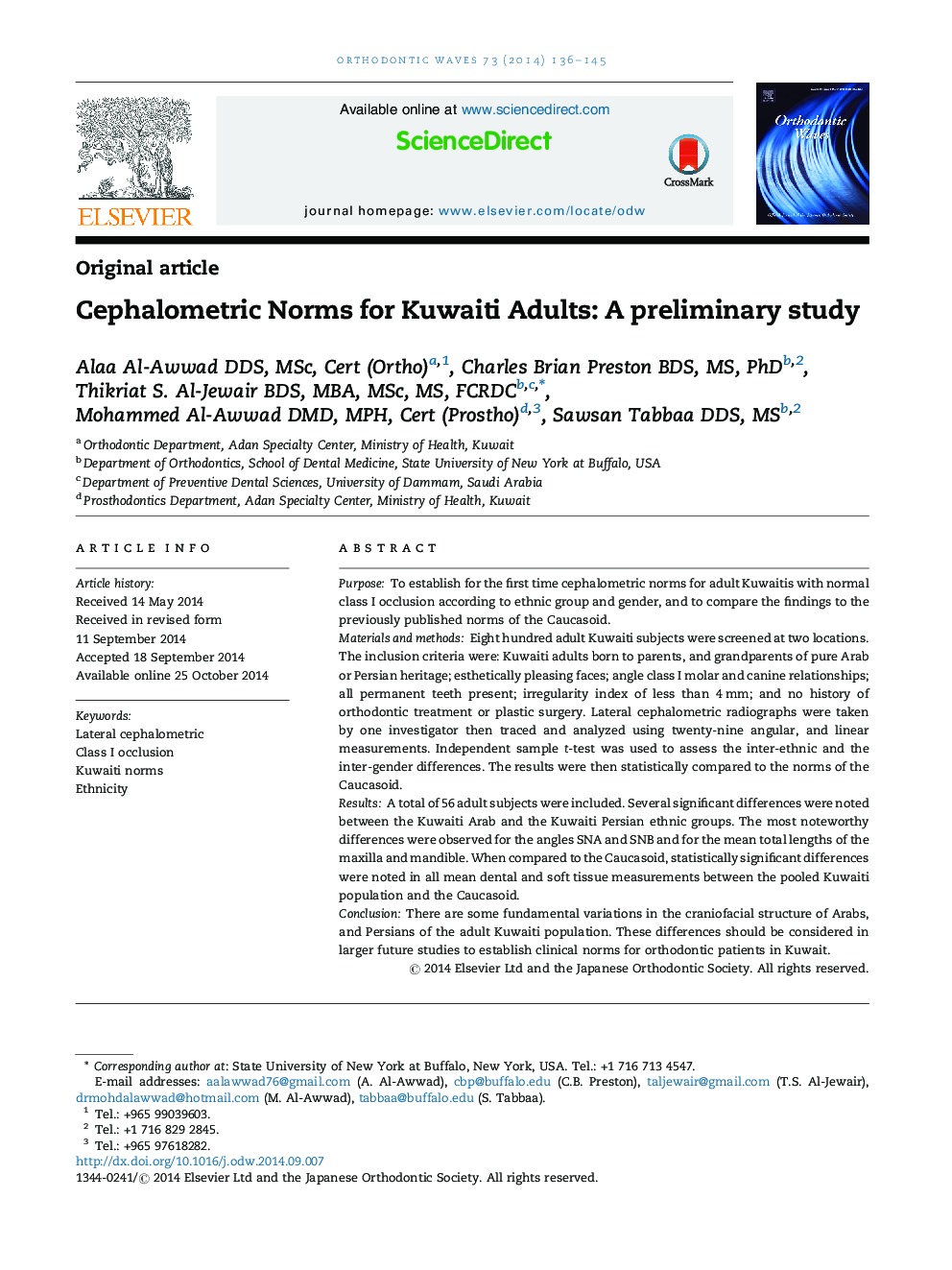| Article ID | Journal | Published Year | Pages | File Type |
|---|---|---|---|---|
| 3170333 | Orthodontic Waves | 2014 | 10 Pages |
PurposeTo establish for the first time cephalometric norms for adult Kuwaitis with normal class I occlusion according to ethnic group and gender, and to compare the findings to the previously published norms of the Caucasoid.Materials and methodsEight hundred adult Kuwaiti subjects were screened at two locations. The inclusion criteria were: Kuwaiti adults born to parents, and grandparents of pure Arab or Persian heritage; esthetically pleasing faces; angle class I molar and canine relationships; all permanent teeth present; irregularity index of less than 4 mm; and no history of orthodontic treatment or plastic surgery. Lateral cephalometric radiographs were taken by one investigator then traced and analyzed using twenty-nine angular, and linear measurements. Independent sample t-test was used to assess the inter-ethnic and the inter-gender differences. The results were then statistically compared to the norms of the Caucasoid.ResultsA total of 56 adult subjects were included. Several significant differences were noted between the Kuwaiti Arab and the Kuwaiti Persian ethnic groups. The most noteworthy differences were observed for the angles SNA and SNB and for the mean total lengths of the maxilla and mandible. When compared to the Caucasoid, statistically significant differences were noted in all mean dental and soft tissue measurements between the pooled Kuwaiti population and the Caucasoid.ConclusionThere are some fundamental variations in the craniofacial structure of Arabs, and Persians of the adult Kuwaiti population. These differences should be considered in larger future studies to establish clinical norms for orthodontic patients in Kuwait.
